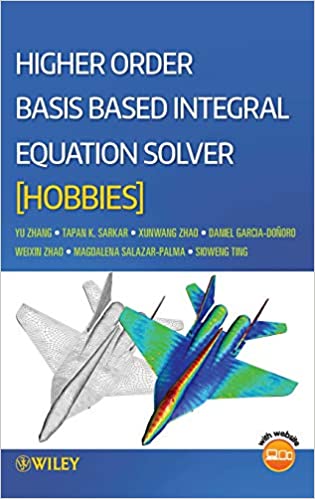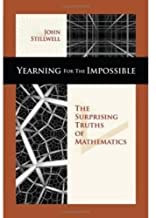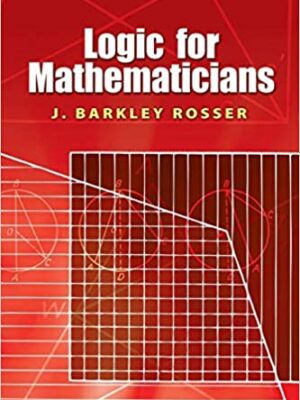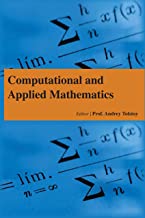Higher Order Basis Based Integral Equation Solver [HOBBIES]
Original price was: ₹18,524.14.₹14,819.31Current price is: ₹14,819.31.
ISBN: 9781118140659
Author/Editor: Yu Zhang
Publisher: John Wiley
Year: 2012
1 in stock (can be backordered)
Description
This book offers the latest in the parallel solution of integral equations for both in-core and out-of-core modes. User-friendly computer code is provided, with a strong and unique capability for solving challenging electromagnetic field problems consisting of complex material structures. The content also provides parallel programming techniques that make MoM (Method of Moments) a useful software and more accessible to antenna and microwave designers who need a fast simulation tool. This code both supports classroom education and helps practicing engineers develop new versatile products.
Additional information
| Weight | 1.106 kg |
|---|
Product Properties
| Year of Publication | 2012 |
|---|---|
| Table of Contents | Preface xv Acknowledgments xxi Acronyms xxiii Chapter 1. Electromagnetic Modeling of Composite Metallic and Dielectric Structures Using Higher Order Basis Functions 1 1.0 Summary 1.1 Integral Equations for Dielectric Structures 1.2 A General Formulation for the Analysis of Composite Metallic and Dielectric Structures 5 1.3 Geometric Modeling 8 1.4 MoM Modeling of the Structures 14 1.5 Description of Higher Order Basis Functions 21 1.6 Testing Procedure 28 1.7 Modeling of the Excitations 35 1.8 Examples Illustrating the Requirements of the Geometrical Modeling 39 1.9 Examples Illustrating the Salient Features of the Higher Order Basis Functions 43 1.10 Performance of the PMCHW Formulation Using Higher Order Basis Functions for Different Values of the Dielectric Constants 48 1.11 Performance of the PMCHW Formulation at Very Low Frequencies Using Higher Order Basis Functions for Dielectric Bodies 50 1.12 Evaluation of Antenna and Scatterer Characteristics 52 1.13 Conclusions 55 References 55 Chapter 2. Parallel In-Core and Out-of-Core LU Factorization for Solving a Matrix Equation and the Corresponding Parallel Matrix Filling in HOBBIES 57 2.0 Summary 5 2.1 Matrix Equation Resulting from a MoM Code 58 2.2 In-core Matrix Equation Solver 58 2.3 Parallel Implementation of an In-core Solver 60 2.4 Data Decomposition for an Out-of-Core Solver 64 2.5 On-slab, Left-looking, Out-of-core LU Algorithm 66 2.6 Solving a Matrix Equation Using the Out-of-core LU Matrices 74 2.7 Parallel In-core and Out-of-core Matrix Filling Schemes 76 2.8 Conclusions 80 References 81 Chapter 3. Getting Started and Working with HOBBIES Projects 83 3.0 Summary 83 3.1 System Requirements 83 3.2 Installing HOBBIES 84 3.3 Starting HOBBIES 90 3.4 Navigation through HOBBIES 91 3.5 Working with HOBBIES Projects 101 3.6 Flowchart for Making a HOBBIES Simulation 103 3.7 Exiting HOBBIES 105 3.8 Getting Help 105 3.9 Quick Start 105 3.10 Conclusion 106 References 106 Chapter 4. Creating a Geometry Model in HOBBIES 107 4.0 Summary 107 4.1 Creating a Simple Model Using the Structure Menu 107 4.2 Creating an Arbitrarily Shaped Model Using the Geometry Menu 156 4.3 Operations on a Model 171 4.4 Manipulations on a Model 189 4.5 Delete a Model 197 4.6 Conclusion 197 References 198 Chapter 5. Meshing a Model in HOBBIES 199 5.0 Summary 199 5.1 Unstructured Mesh 200 5.2 Structured Mesh 202 5.3 Element Type 205 5.4 Mesh Criteria 206 5.5 Reset Mesh Data 207 5.6 Draw 208 5.7 Generate Mesh 210 5.8 Erase Mesh 211 5.9 Edit Mesh 211 5.10 Show Errors 212 5.11 Mesh Quality 213 5.12 Mesh Options from Model 214 5.13 Mesh Generation Example for Surfaces 214 5.14 Example of Mesh Generation for a Curve 218 5.15 Assigning Element Sizes for Generating the Mesh 221 5.16 Conclusion 226 References 226 Chapter 6. Setting up a HOBBIES Solution and Running a Simulation 227 6.0 Summary 227 6.1 Operation Mode 228 6.2 Units 228 6.3 Frequency Range 230 6.4 Domains 230 6.5 Loadings 238 6.6 Excitation 242 6.7 Symmetry 248 6.8 Edge 250 6.9 Output Settings 254 6.10 Options 258 6.11 Running Simulations 265 6.12 Conclusion 272 Chapter 7. HOBBIES Post-Processing for Visualizing the Results 273 7.0 Summary 273 7.1 Entering Post-Processing Window 274 7.2 Post-Processing Window 274 7.3 Example of Operations in Post-Processing 280 7.4 Leaving Post-Processing Window 316 7.5 Limitation of Post-Processing display in Academic Version of HOBBIES 320 7.6 Conclusion 320 Chapter 8. Solving Electromagnetic Field Problems Using HOBBIES 321 8.0 Summary 321 8.1 Metallic Structures 322 8.2 Composite Metallic and Dielectric Structures 350 8.3 Loadings 374 8.4 Use of Symmetry in the Analysis of a Problem 398 8.5 Antenna above a Real Ground 428 8.6 Use of Imaging for Generating an Accurate Solution 436 8.7 Conclusion 442 References 442 Chapter 9. Advanced Electromagnetic Modeling Using HOBBIES 443 9.0 Summary 443 9.1 Radiation Analysis of Complicated Antennas 444 9.2 Radar Cross Section (RCS) Calculation of Complex Targets 458 9.3 Conclusion 476 References 476 Chapter 10. HOBBIES Optimizer and its Applications 479 10.0 Summary 10.1 Flowchart of the HOBBIES Optimizer 480 10.2 Optimization Algorithms Used in the Optimizer 482 10.3 Setting up the HOBBIES Optimizer 487 10.4 Optimization Examples 507 10.5 Conclusion 516 References 516 Appendix A. A Brief Summary of Some Commands Used in HOBBIES 517 Appendix B. A List of all Codes in the Accompanying CD 525 Index 531 |
| Author | Yu Zhang |
| ISBN/ISSN | 9781118140659 |
| Binding | Hardback |
| Edition | 1 |
| Publisher | John Wiley |
You must be logged in to post a review.






Reviews
There are no reviews yet.